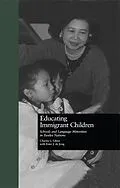This study is concerned with the ways in which a dozen " knowledge-based societies" of Western Europe and the English-speaking world respond to unprecedented cultural and linguistic diversity resulting from the flow of immigrants and refugees since World War II. It asks how public policy has sought to use schooling to minimize the potentially divisive and inequitable effects of this diversity and to provide opportunities to the children of immigrants. It asks also how the nature of each of these societies affects the meaning of integration into each of them.
Autorentext
Glenn, Charles L. ; De Jong, Ester J.
Zusammenfassung
This comparative study surveys the educational policies and practices in response to language diversity in a dozen nations, and draws from them lessons for a more effective "whole-school" approach.Policies and practices are discussed in the context of political debate within the minority communities and in the wider society of each nation; the competing claims of integration and of language and cultural maintenance are taking widely differing forms in the nations studied and among the various minority communities. Perspectives from sociology, cultural anthropology, sociolinguistics, political science, and research on school effectiveness are brought to bear.
Inhalt
Educating Immigrant Children: Schools and Language Minorities in Twelve Nations is certainly the most comprehensive review of its topic available in English at this time. The book is strongly recommended for courses on immigration and education, social foundations of education, bilingual and multicultural education and comparative education. It is also a valuable contribution to a very large international literature on education and minority/migrant issues for its consistent presentation of complex issues in all their complexity -- Education Review
